What Is Digital Marketing?
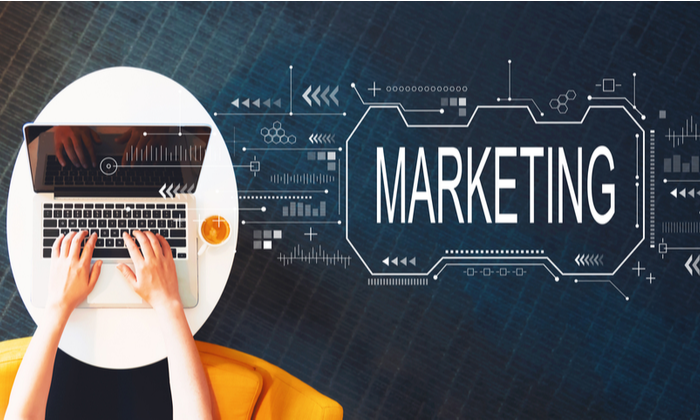
Digital marketing is the act of promoting products and services through digital channels, such as social media, SEO, email, and mobile apps. Any form of marketing that involves electronic devices is considered digital marketing.
It can be done online and offline; in fact, both kinds are important for a well-rounded digital marketing strategy.
Do you want to learn more about digital marketing? This guide will cover everything you need to know to get familiar with digital marketing.
Why Digital Marketing Matters
Remember billboards? I do.
As a young kid in California, my experiences from the back seat of our car mostly alternated between: “Mom, when are we there?” and “Uh, look, McDonald’s, can we go?” whenever one of those 10-foot billboards popped up on the side of the road.
Growing up with Indian parents, the answer to both of those would, most times, be the same: “not yet.”
Sometimes, big brands would even start a billboard war, like this one between Audi and BMW, which got quite a few laughs:
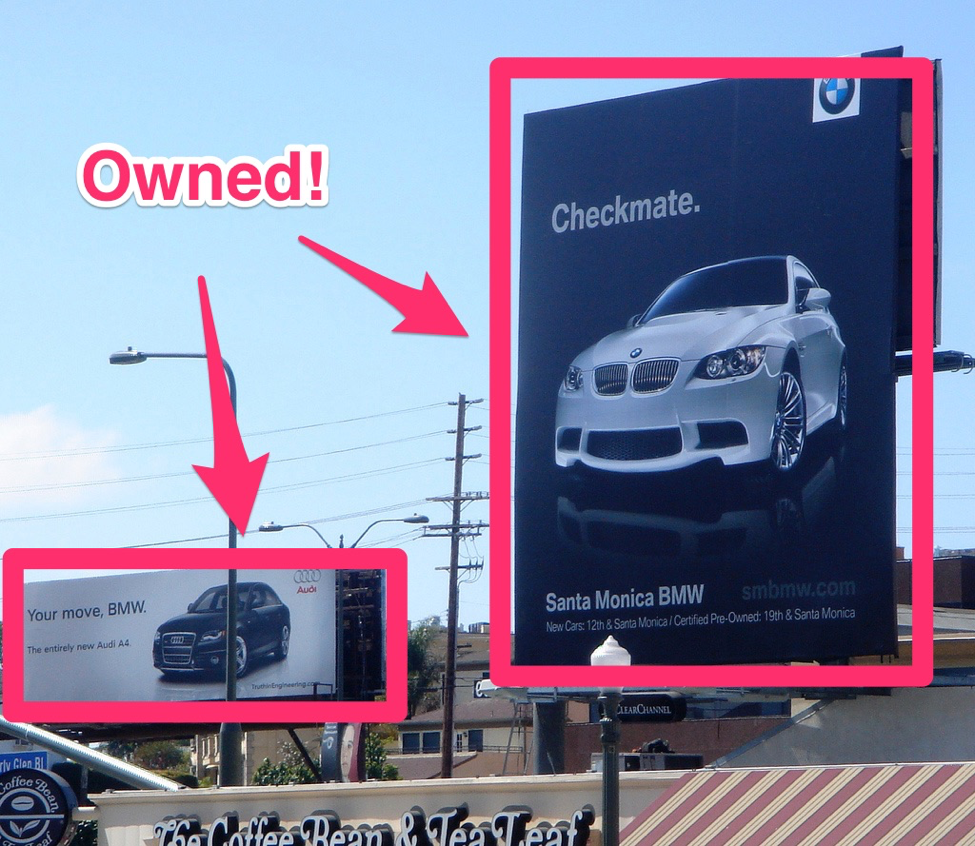
In 2015, many of my clients spent hundreds of millions of dollars on billboard advertising.
Today, most companies have moved to online marketing.
That’s because Google and Facebook generate more revenue than any traditional media company. After all, they control more eyeballs. That’s why digital marketing matters; it’s where the attention is.
The reason why billboards, like the ones above, will die, is because the future of driving will look like this:
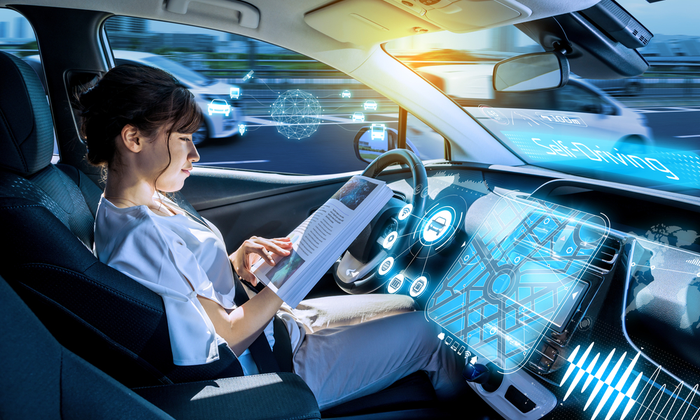
Although driverless cars already exist, drivers still have to pay attention. As the technology improves, not a single passenger will spend their time looking at the road.
Do me a favor; take a peek at the passenger seat the next time you give someone a ride. Just for a second.
Chances are, they’ll be looking at their phone.
Who will see those advertisements if no one is looking at the road?
What’s more: the share of people spending more time using electronic devices continues to rise, while print advertising continues to decline.
That means you don’t have much time to figure out this digital marketing stuff.
Nearly 5 billion people worldwide go online to shop, learn, entertain themselves and even work.
If you want to reach those people, digital marketing is a must.
Maybe you think you have a local store, so you don’t need to worry about digital marketing.
You’d be wrong.
According to Google, 88 percent of people who conduct a local search on their smartphone visit a related store in the next week.
You’ll miss out on that traffic if you’re not online.
Digital marketing also provides access to more data and analytics about your customers, how they navigate the buying cycle, and what they want.
You need to understand and know how to leverage digital marketing for your business to succeed.
The History of Digital Marketing
Digital marketing was popularized in the early 2000s, but digital marketing has been around much longer.
Like, WAY longer. About 100 years longer, to be exact.
Here’s a pic of the first digital marketer in history:
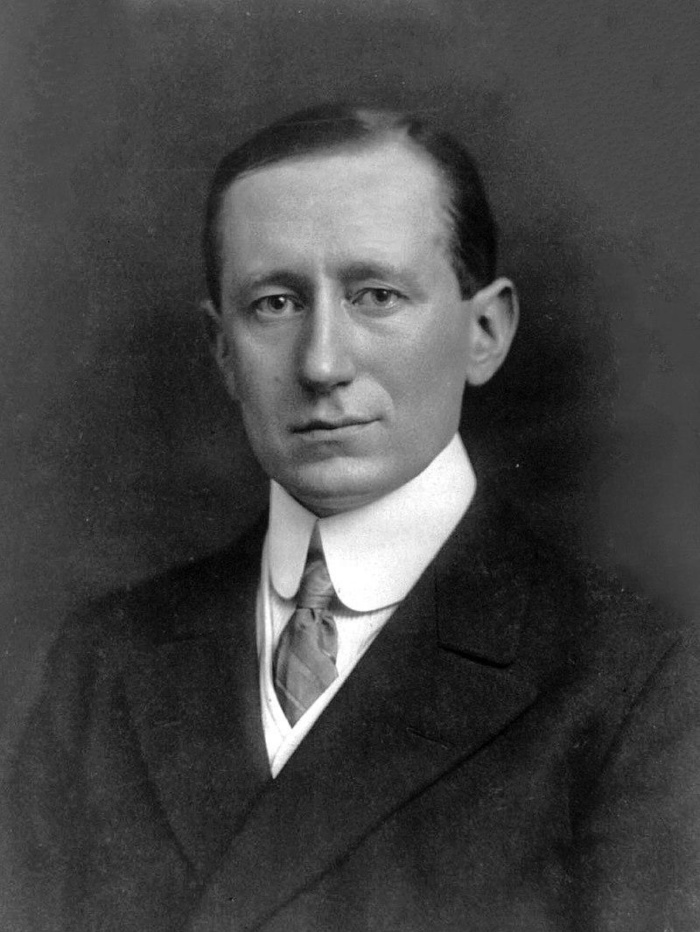
His name was Guglielmo Marconi, and he was born in 1874.
In 1896, he was the first human to demonstrate a “public transmission of wireless signals.”
He invented the radio.
Shortly after his demonstration in England, Morse signals were transmitted across open water.
While it would take another 10 years for the radio to reach the general public, it sure didn’t take the creators long to realize they could use it to sell stuff.
The first live broadcast was from an opera performance at the Met and guess what people did after it?
They bought show tickets!
Digital marketing was born.
Online Digital Marketing Overview
The 2 main pillars of digital marketing are online marketing and offline marketing. That said, since I’ll talk about online marketing in a separate guide, I’ll only mention the different areas of online marketing here for the sake of completeness.
The 7 big categories of online marketing are:
- Search engine optimization (SEO)
- Search engine marketing (SEM)
- Content marketing
- Social Media Marketing (SMM)
- Pay-per-click advertising (PPC)
- Affiliate marketing
- Email marketing
Intro to Digital Marketing
There are five main categories of digital marketing:
- enhanced offline marketing
- radio marketing
- television marketing
- phone marketing
- QR codes
Enhanced offline marketing is a form of marketing that is done offline, but enhanced with electronic devices.
For example, if your restaurant uses iPads for your customers to place orders, then the offline experience of eating Thai food is enhanced with this electronic device.
People have been using digital media to enhance their marketing for decades.
Next, there’s radio marketing. The next time you hear an annoying, over-enthusiastic car dealer shout every word of his or her commercial, thank Mr. Marconi.
Of course, we can’t forget television marketing, which has been around for more than half a century.
Phone marketing is the biggest and fastest-growing area of offline marketing, with admittedly many flops, busts, and failures as well.
Enhanced Offline Marketing
What’s the difference between a billboard somewhere in the desert of Arizona and a billboard in New York City’s Times Square?
The size? The product?
Three letters: LED. Light emitting diodes.
All of the billboards in Times Square are electronic!

All of the billboards in Times Square are electronic!
Why? Because in the desert of Arizona, no one’s competing with you for people’s attention. If you have a billboard at all, you win.
In Times Square, attention is probably more valuable than anywhere else in the world, with more than 360,000 visitors each day.
If you want to be distracted, there are buses, taxis, promoters shouting, and then, of course, the electronic billboards. Some of them are even interactive, showing live feeds of the people on the square or pictures of customers.
Renting a billboard space on Times Square for just one day can set you back over $50,000.
Here’s another example.
What do you see when you walk into an Apple Store these days?
People leaning over iPads, Macbooks, and iPhones.
Product demos should be an important part of your digital marketing strategy if you have any type of electronic product.
Another example is those free trial CDs that AOL sent out in the early 90s—you may remember those were everywhere at one point. All those CDs may have been annoying, but they are likely a big reason for AOL’s early success.
Radio Marketing
In fact, it’s thriving:
- Nearly 244 million Americans listen to the radio each month.
- People spend an average of 99 minutes per day listening to radio content.
- Radio ad spend is predicted to hit 11 billion USD.
In recent years, radio made a smart move: having the hosts read out advertising sponsorships at the beginning of shows.
To create a sponsorship, find your local radio stations with a quick Google search. Find a station whose audience reflects your company’s target demographic; radio stations should be able to provide you with the data that helps you select the right fit.
For example, if your company sells maternity products, you want to find a radio program whose average listener is a female between the ages of 24 and 40.
If you go the traditional radio advertising route, the key is to be entertaining and catch the listener’s attention.
Cadillac and Dairy Queen are two brands that come up with solid radio commercials on a consistent basis.
You can listen to some examples here.
TV Marketing
Television marketing is so huge, it’s unlikely to ever fully go away. However, it is changing as consumers move away from traditional television in favor of streaming services like Netflix and Amazon Prime.
Some fast facts about TV marketing:
- 122.4 million households in the US have a television.
- cable providers lost 6 million subscribers a year between 2019 and 2021.
- 85 percent of US households have at least one streaming service.
Though cable TV ads are harder to target the right audience, have a low ROI compared to other forms of digital advertising, and generally seem irrelevant in the digital age, there is one type of television ad that may still be worth it; but it will cost you big.
Remember I mentioned renting a billboard in Times Square can cost $50,000 a day?
A 60-second commercial aired during the Super Bowl costs $5.6 million.
The often viral and memorable commercials still pay for themselves thanks to their cross-pollinating effect.
Roughly 10 percent of all TV commercial-related shares on social media come from Super Bowl ads.
So do about 8 percent of all views on Youtube that go to TV commercial videos.
If your commercial makes it to the blacklist (commercials the network decides can’t be shown on TV), the viral effect is usually even stronger, like the infamous Carl’s Junior ad that couldn’t be shown in the 2015 Super Bowl.
What’s more, these commercials become online assets, generating millions of YouTube views over time.
Sadly, the hype of the Super Bowl commercials is probably more of a remnant from a success period that’s about to fade.
The $27 billion companies still annually spend worldwide on TV commercials may not always be the best investment moving forward. Television advertising, in the form we know it, is changing to make way for the more custom-tailored experiences we are already getting used to.
So, if you plan on doing offline digital marketing, I suggest focusing on a marketing platform or channel of the future—which in the case of television marketing, means streaming services.
Phone Marketing
Nearly 75 percent of Americans own a smartphone, and more people access the internet from their phones than via a desktop PC or laptop.
Mobile marketing is here to stay. In 2015, the amount spent on mobile ads exceeded that spent on desktop ads for the first time and the market continues to grow.
Let’s look at some offline ways to market your products using phone marketing.
Calling and Texting
Cold calling is the act of calling a person with no prior contact in an effort to make a sale.
Cold calling can generate an average of three sales per day, so it doesn’t have the scalability of social media or email. Still, it can be a valid method of marketing in some industries.
What works better is marketing via texting, an “app” available on every phone.
Online or offline, a text message is almost a guaranteed read.
While you should definitely get permission first, for example, by having your customers text a certain word to a phone number, several providers offer text marketing at scale.
There are several ways to leverage text message marketing.
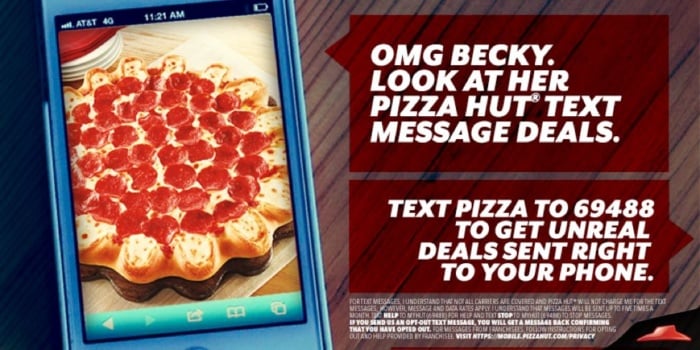
Special deals, coupons, and discounts are great for restaurants to get additional customers and turn walk-ins into regulars.
You can see more examples of successful restaurant text messaging campaigns here.
Using text reminders as customer service can also enhance your mobile marketing as many pharmacies do. They alert customers when their prescription is ready for pickup.
Another option is to create a loyalty program, where you text participating customers special deals and giveaways.
QR Codes
QR codes are a type of barcode that take users to a specific web page or app.
This one, for example, is for the English home page of Wikipedia:

You used to have to download a specific app to use QR codes, but now all you need is the camera on your smartphone to scan and open the site.
They can be used to deliver ads, send users to a video, or even combined with other forms of enhanced offline marketing, like in this Burger King television ad:
How to Set Up an Offline Digital Marketing Strategy
Ready to set up an offline digital marketing strategy? Here’s how to do it in four easy steps.
- Set up an enhanced offline marketing strategy: Create ads optimized for platforms like digital billboards, give product demos, and offer digital product samples.
- Create a radio marketing strategy: Approach local radio stations about ad sponsorships or create engaging traditional ads using silly voices, local celebrities, or mentioning trendy topics.
- Engage in television marketing: The most effective way to get a decent ROI on tv ads is to buy ad time during popular events that people watch live, create ads that go viral (by being controversial, emotional, or funny), or create ads you can reuse across multiple ad channels.
- Use phone marketing: Smartphones create unique phone advertising opportunities. Use modern software to cold call and leave ringless voicemails for targets, send texts offering deals and promotions to subscribing customers, or use QR codes.
FAQs
Conclusion
That’s the scoop on digital marketing. As you can see, the internet is, by far, not the only place for marketers to gain success, even today.
Of course, no one can afford to miss out on the opportunities and every marketer will need to master online marketing.
Employing these offline digital marketing tactics can help diversify your lead generation beyond social media, content marketing, and the like.
Though our agency does not specialize in offline marketing, we can help you if you need help growing or getting your online digital marketing strategy off the ground! Reach out to learn more.


No comments:
Post a Comment